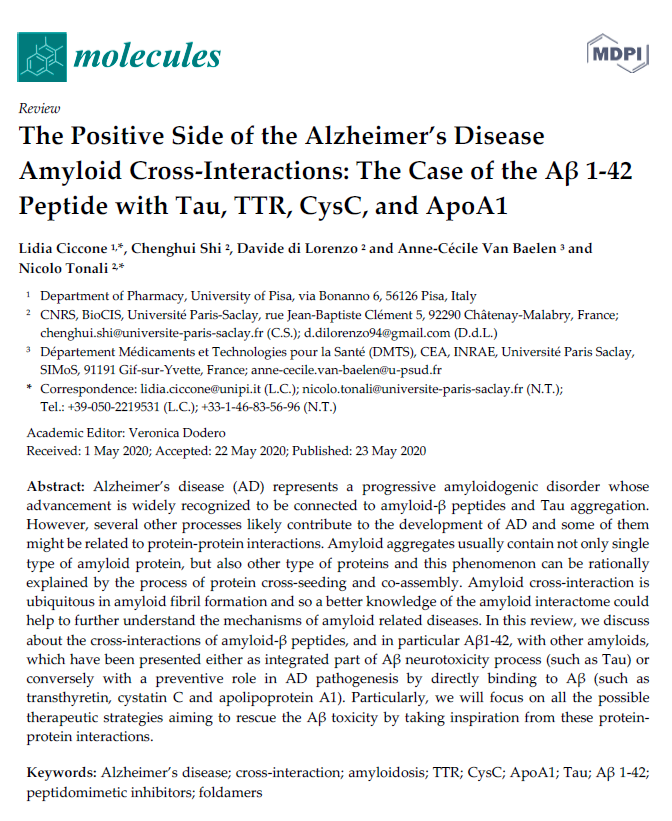Science News
The Positive Side of the Alzheimer’s Disease Amyloid Cross-Interactions: The Case of the Aβ 1-42 Peptide with Tau, TTR, CysC, and ApoA1
Mag 26, 2020 | News

Alzheimer’s disease (AD) represents a progressive amyloidogenic disorder whose advancement is widely recognized to be connected to amyloid-β peptides and Tau aggregation. However, several other processes likely contribute to the development of AD and some of them might be related to protein-protein interactions. Amyloid aggregates usually contain not only single type of amyloid protein, but also other type of proteins and this phenomenon can be rationally explained by the process of protein cross-seeding and co-assembly. Amyloid cross-interaction is ubiquitous in amyloid fibril formation and so a better knowledge of the amyloid interactome could help to further understand the mechanisms of amyloid related diseases. In this review, we discuss about the cross-interactions of amyloid-β peptides, and in particular Aβ1-42, with other amyloids, which have been presented either as integrated part of Aβ neurotoxicity process (such as Tau) or conversely with a preventive role in AD pathogenesis by directly binding to Aβ (such as transthyretin, cystatin C and apolipoprotein A1). Particularly, we will focus on all the possible therapeutic strategies aiming to rescue the Aβ toxicity by taking inspiration from these proteinprotein interactions.
Written by tubinAD
